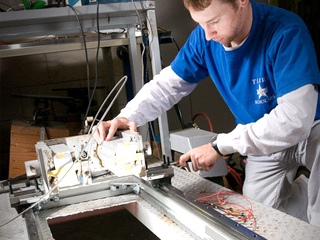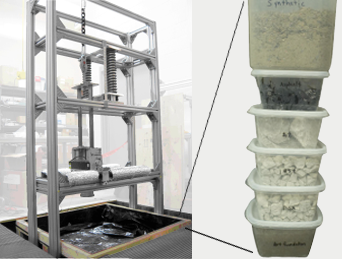Footing and Race Surfaces
"Track-in-a-Box" - for study of race surfaces for racehorse injury prevention
Racetrack surfaces have long been implicated for causing musculoskeletal injuries to racehorses, but epidemiologic studies of the effect of race surfaces on injuries have been inconclusive because the effects of the multiple confounding risk factors are difficult to separate from the race surface effect. The racehorse industry has recognized the potential for injury reduction through racetrack surface changes, as demonstrated by the replacement of dirt surfaces with synthetic materials at several race courses in the US over the last 3 years. However, the manufacture and selection of synthetic surface materials have largely been based on empirical evidence and marketing factors; there is a lack of information regarding the scientific properties of existing racetracks. Our goal is to develop a laboratory procedure to assess the scientific properties of racetrack surfaces using our track-testing device. This laboratory method will allow for controlled studies which will minimize the confounding factors which are unavoidable when testing at racetracks. Ultimately, surface properties from our laboratory testing will be incorporated into our equine computer model in order to investigate the optimal surface properties for reducing injury to racehorses.


Contacts
Susan M. Stover, DVM, PhD, Dipl ACVS
Professor
Christina Rohlf
PhD student, Dept. of Biomedical Engineering
